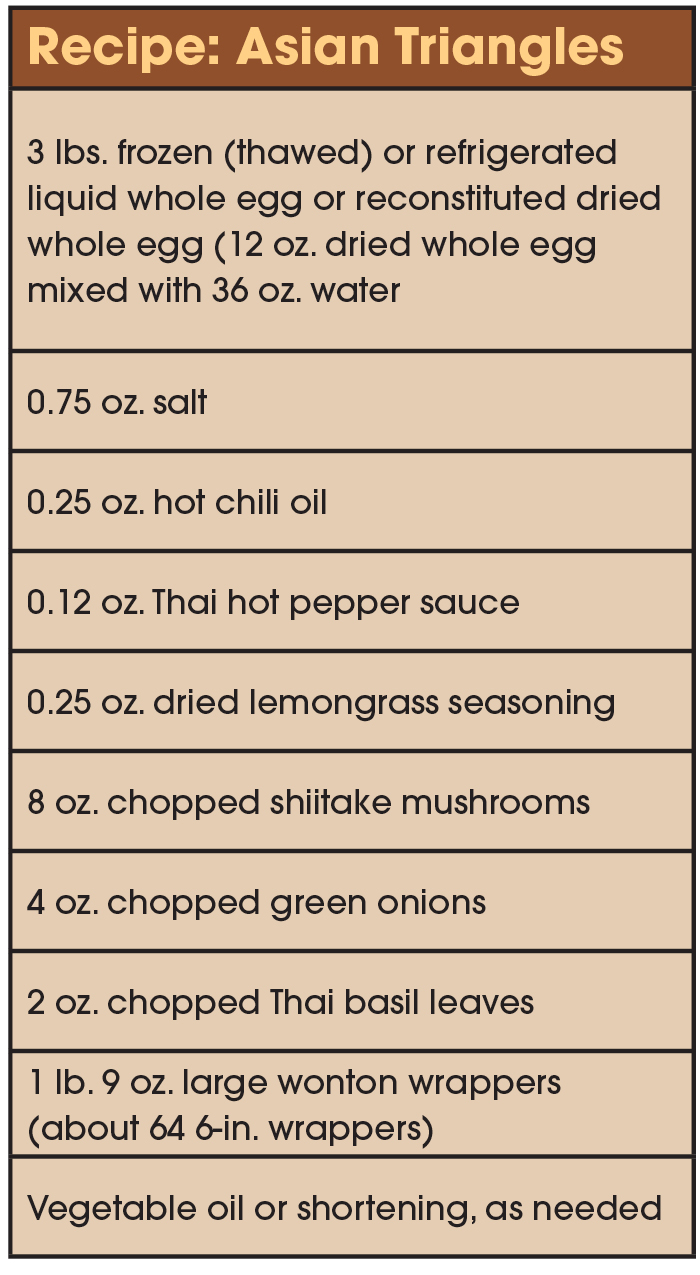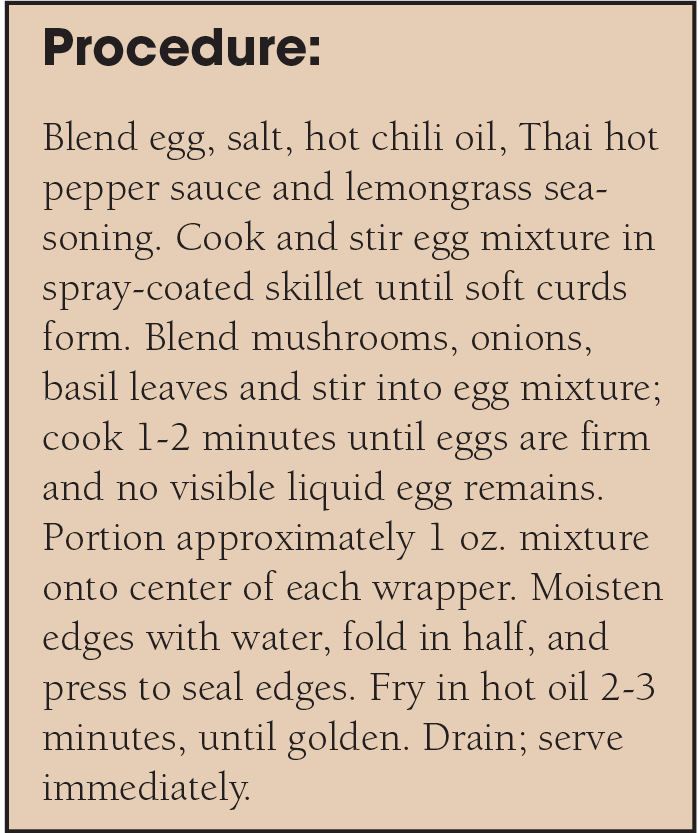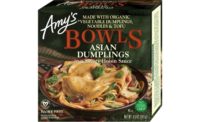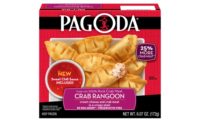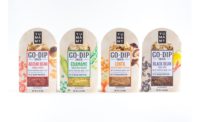Fusion cuisine is nothing new, but millennials in particular love a good mash-up. This concept takes a familiar egg roll appetizer and elevates it with trending Southeast Asian flavors, like sweet Thai basil, aromatic lemongrass, and piquant chili oil. They’re also vegetarian, and with more Americans attempting to curb meat consumption, these bites offer a savory snack that fits the flexitarian lifestyle, and the contrasting textures from the hearty eggs, toothsome mushrooms and crunchy wonton wrapper make for a satisfying bite, without meat.
Dumpling fillings usually need a binder to keep them cohesive when cooked and prevent them from falling apart when eaten. Real eggs make an excellent binder, as they are packed with protein. During heating, proteins coagulate and retain their shape, holding the other inclusions in place, like vegetables and meat. In this concept, eggs are also functioning as the main filling ingredient, offering a neutral, savory base for the other highly flavorful ingredients like hot pepper sauce and seasonings to shine.
The main concern when converting recipe concepts to frozen products is managing moisture migration from the filling ingredients into the wrapper or crust, also known as freeze/thaw stability. One way to mitigate excess moisture in the filling would be to use reduced-moisture individually quick-frozen (IQF) vegetables, decreasing the need to bind moisture with gums or starches if a short ingredient statement is desired.
Depending on the sales channel, the frying process would also need to be modified. For foodservice, the triangles would be pan-fried and frozen, then fried again at the operator level to reheat them. For retail, the triangles could be fully cooked and frozen for reheating in a microwave or oven by the consumer.
